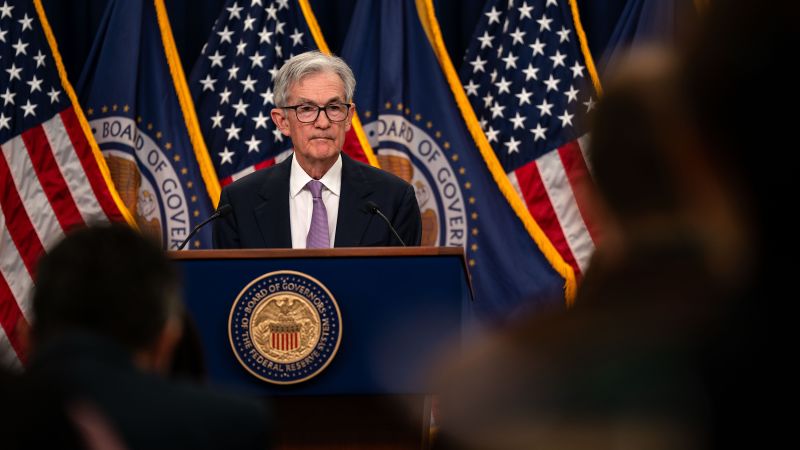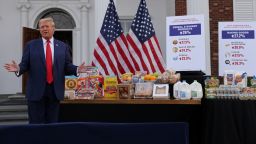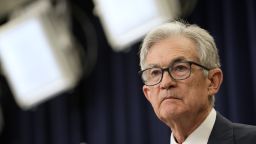—
Federal Reserve Chair Jerome Powell said Thursday that interest rates are still expected to decline further, but suggested they might not be that much lower over the next few months.
Powell said more rate cuts are likely underway because the economy’s current trends and dynamics are expected to remain in place, at least in the short run. That includes a slowing job market and cooling inflation, facilitated by rates that are still at restrictively high levels. Holding borrowing costs at their current elevated rate could push up unemployment.
“We are moving policy over time to a more neutral setting,” Powell said in prepared remarks for an event in Dallas. “The economy is not sending any signals that we need to be in a hurry to lower rates.”
US stocks broadly fell after Powell’s remarks.
As the Fed looks toward continuing its rate-cutting cycle, the proposed policies of President-elect Donald Trump could eventually bring some dramatic changes to the US economy, which would then inevitably affect the Fed’s thinking on rates.
Economists mostly agree that it will take time for Trump’s proposed policies to have an impact on the broader economy,if they take effect, so the economy next year might not change dramatically right away. Trump’s economic agenda includes extending 2017 tax cuts, rolling out a series of tax breaks, capping credit card interest rates at around 10%, and enacting high across-the-board tariffs — plans that will likely be shepherded along by the incoming Republican-led Congress.
Powell said in a moderated discussion that Fed economists may begin to assess Trump’s plans and how they could affect the economy more seriously as early as next month, adding that policymakers will eventually factor in those effects after they’ve been studied more thoroughly. But he stressed that many things are still up in the air, such as the possibility of retaliatory tariffs from other countries.
“We reserve judgment until we actually know what we’re talking about,” Powell said. “I don’t want to speculate. I don’t want to guess.”
Powell’s term as chair ends in May 2026, but his time on the Fed’s board of governors stretches through January 2028. When asked if he plans to remain at the Fed past his chairmanship, he only confirmed that he’d finish his term as chair.
Inflation’s descent gets bumpy again
Inflation data for October didn’t show progress from the prior month, but it didn’t reflect a genuine pick up in price pressures either. It’s also too soon for Fed officials to conclude that October data is indicative of any new trend.
The Consumer Price Index rose 2.6% in October from a year earlier, up from September’s 2.4% annual rate and represents the first year-over-year acceleration since March. The October CPI gained steam mostly because of comparisons with data from a year earlier, when inflation fell sharply, known as “base effects.” The Producer Price Index for October, released Thursday, also came in hot.
Those figures offer a glimpse of what the Fed’s preferred inflation measure, the Personal Consumption Expenditures price index, could show for October when that report is released later this month.
Earlier in the year, it took three consecutive months of bad inflation reports for officials to admit there has been a “lack of further progress.” That forced officials to keep rates on hold until September.
For now, inflation is still expected to continue with its steady downward trend, despite some bumps along the road, according to economists and Powell.
“With labor market conditions in rough balance and inflation expectations well anchored, I expect inflation to continue to come down toward our 2 percent objective, albeit on a sometimes-bumpy path,” Powell said.
Inflation isn’t in the spotlight as much as it used to be. While additional hot inflation reports could be factored in to the Fed’s decisions, officials are also looking at the US labor market closely. Slower hiring and an uptick in unemployment played a role in prompting the Fed to begin cutting rates in September.
The elephant in the room
Trump’s election to a second term comes with big implications for the Fed, in addition to Powell himself.
Economists have widely noted that Trump’s agenda poses the risk of inflation reigniting, which could force the Fed to not just stop cutting rates, but perhaps begin hiking again if price increases begin to pick up, though the ultimate effects of Trump’s economic plans might not be apparent until later on.
That would keep borrowing costs at restrictively high levels, which means the cost of credit cards and mortgages would continue to keep a tight grip on US consumers — who will also be dealing with high inflation if Trump’s plans indeed stoke that fire.
There’s also been tension between Trump and Powell, whom the president-elect first nominated in 2017 to steer the central bank. Powell’s dedication to the Fed’s independence has drawn Trump’s ire because the Fed chief makes sure that the central bank’s decisions are driven by economic data, not the wishes of any sitting president.
Powell stressed the importance of the Fed’s credibility, pointing to consumers’ inflation expectations as a measure of that. He said that Americans expecting inflation to moderate further is evidence that people still trust the Fed.
In a speech Thursday, Fed Governor Adriana Kugler also spoke on the importance of the Fed’s independence and credibility, pointing to various examples in academic research, and how that is critical for fighting periods of high inflation.
“Growing up in Colombia, I vividly recall the daily challenges of trying to plan and live with sustained double-digit inflation, and I especially remember the pain it imposed on disadvantaged people,” Kugler said at an event Uruguay.





